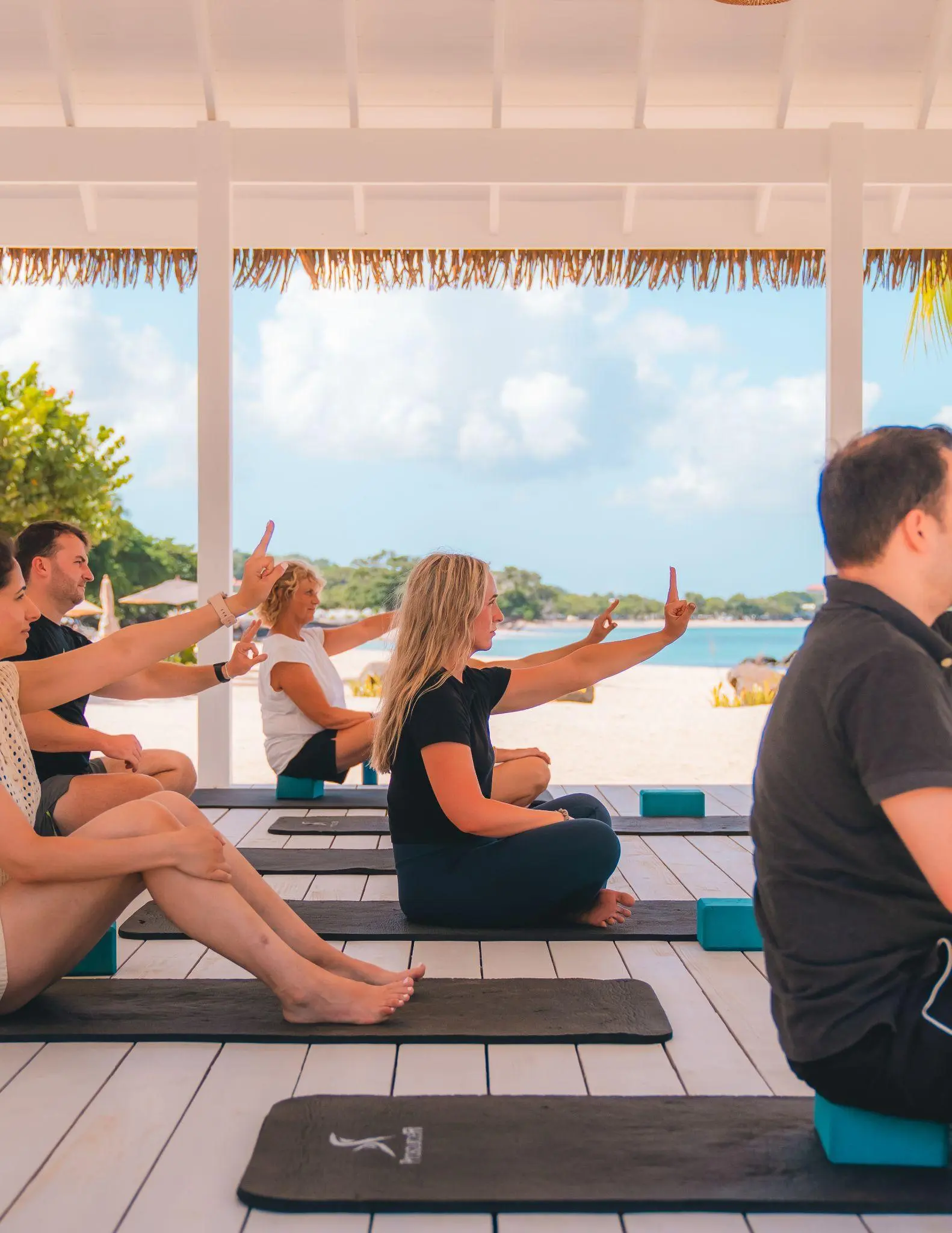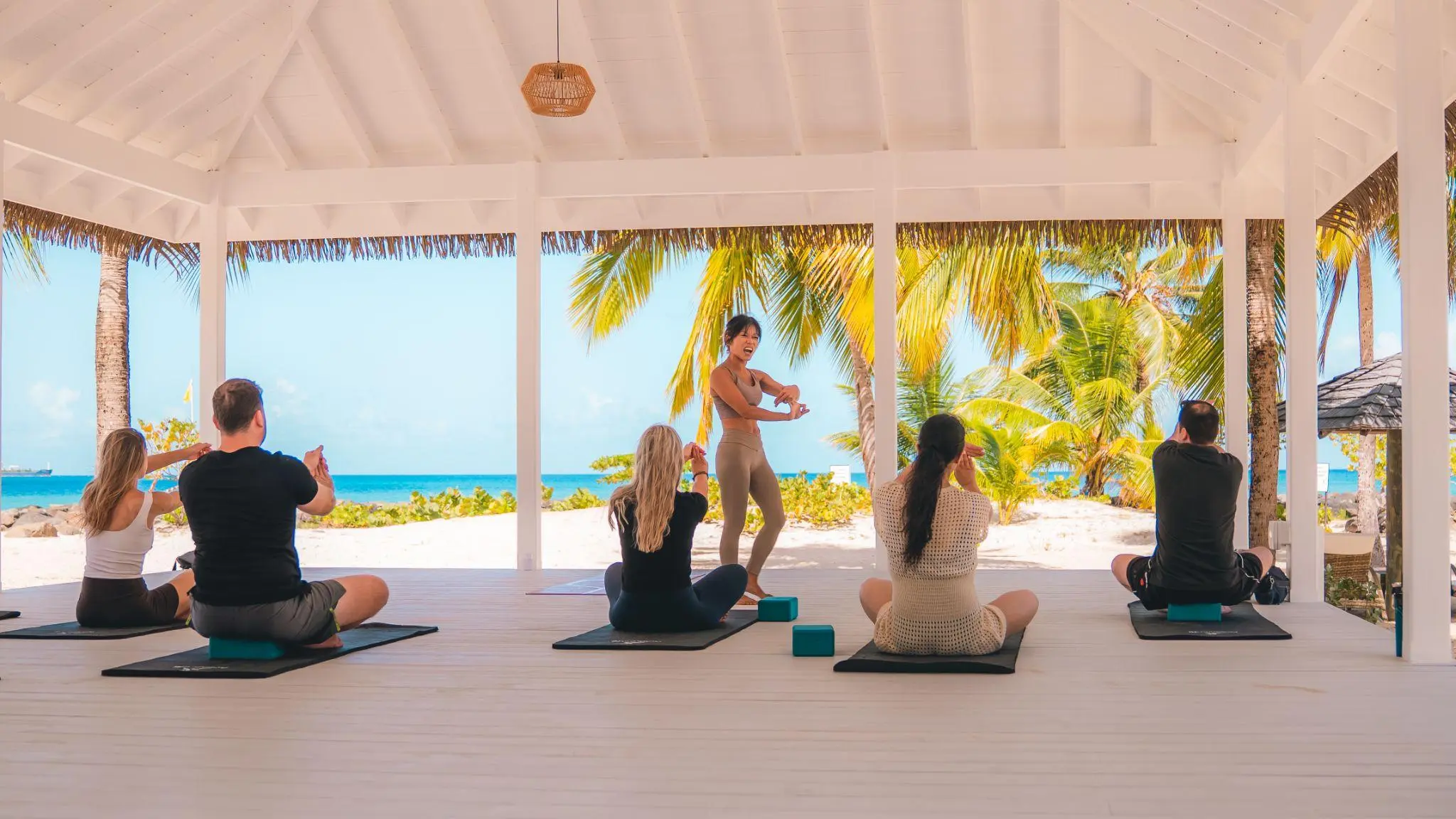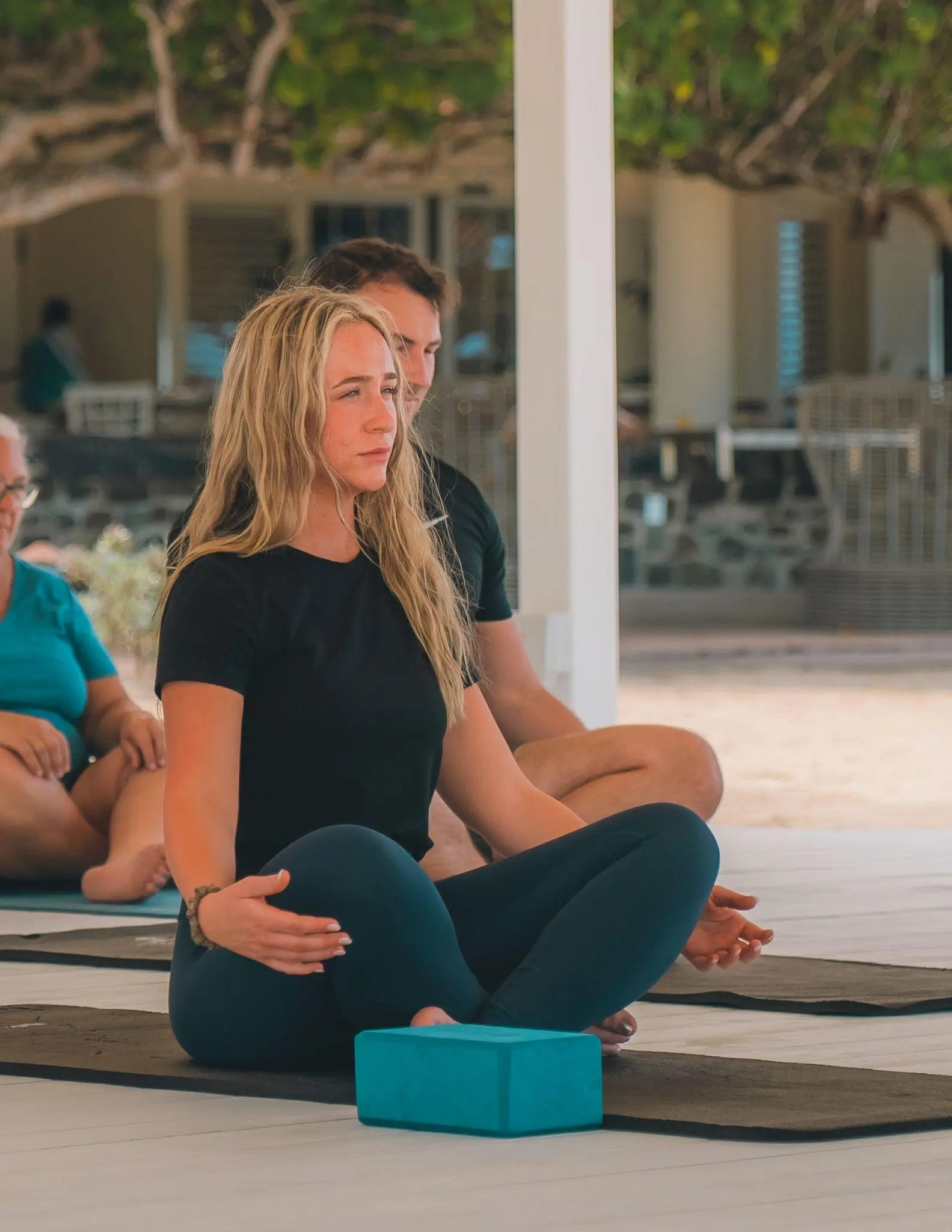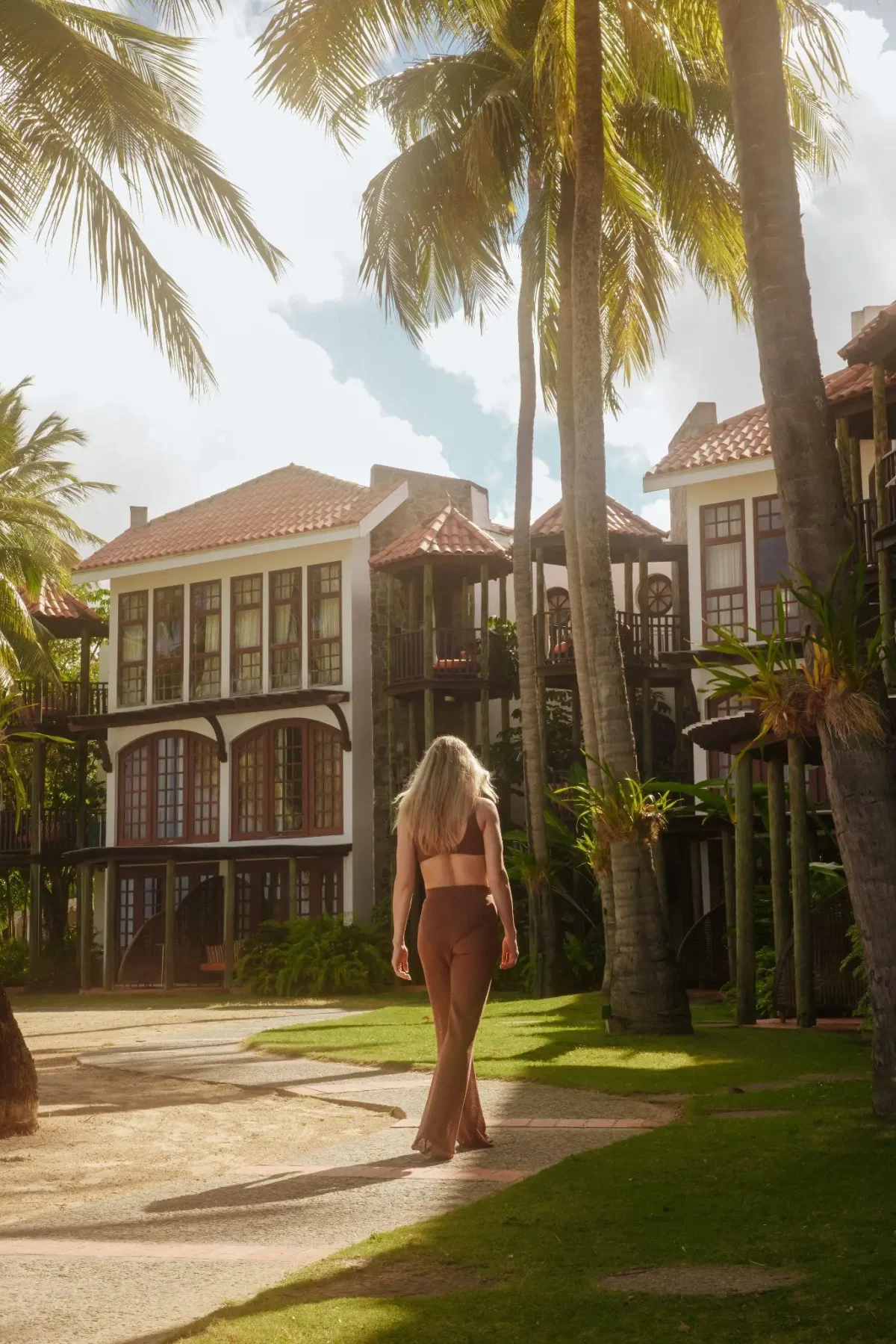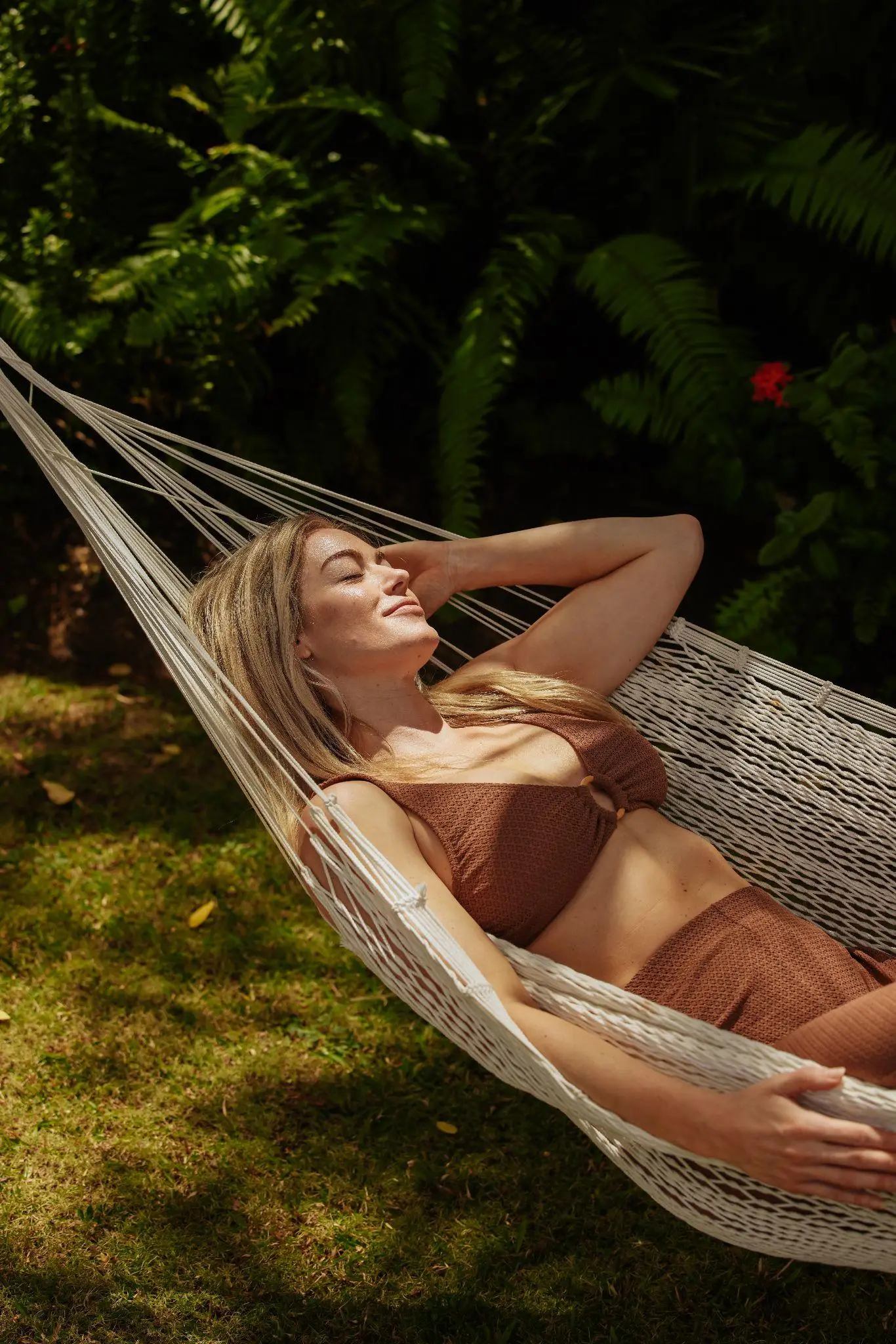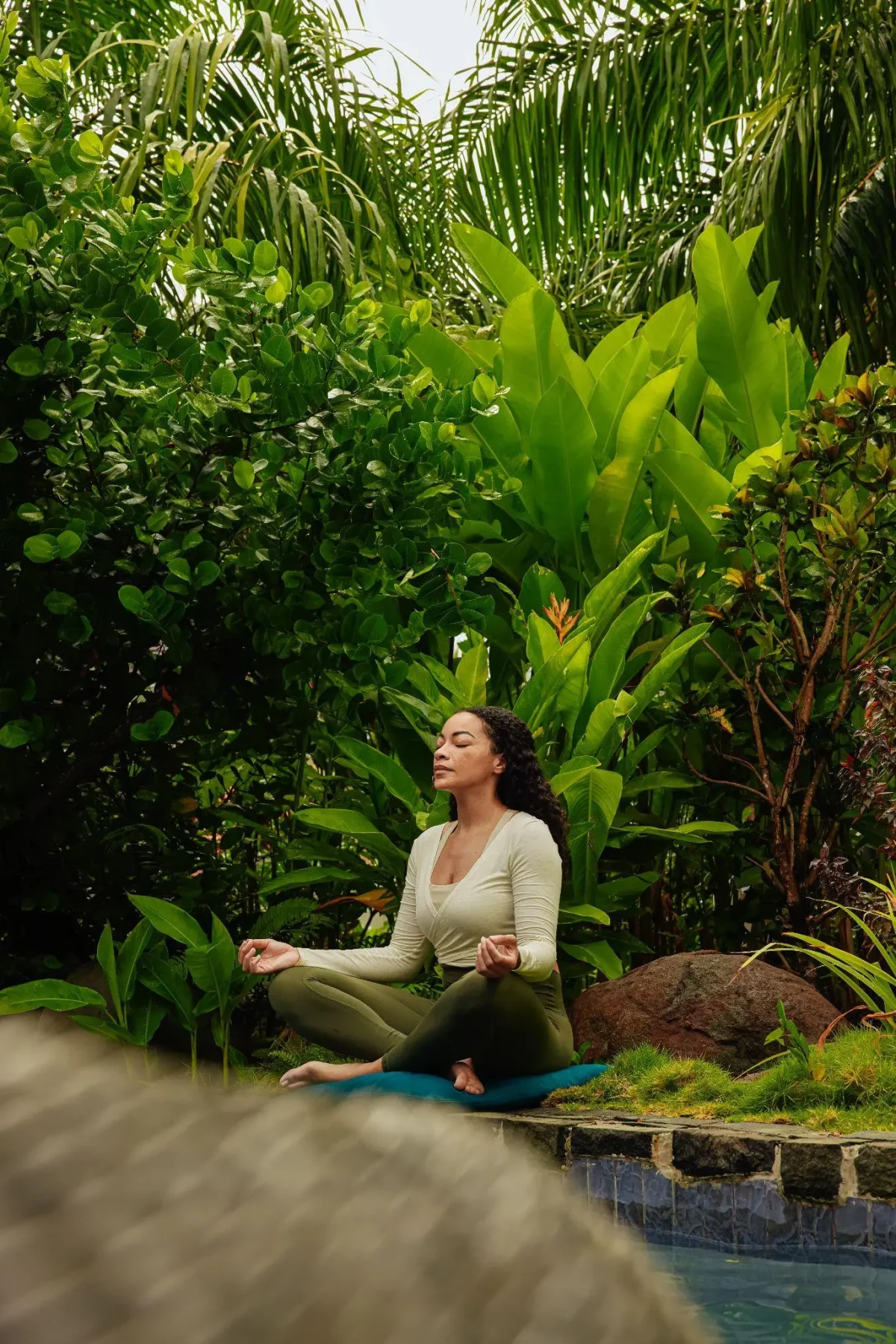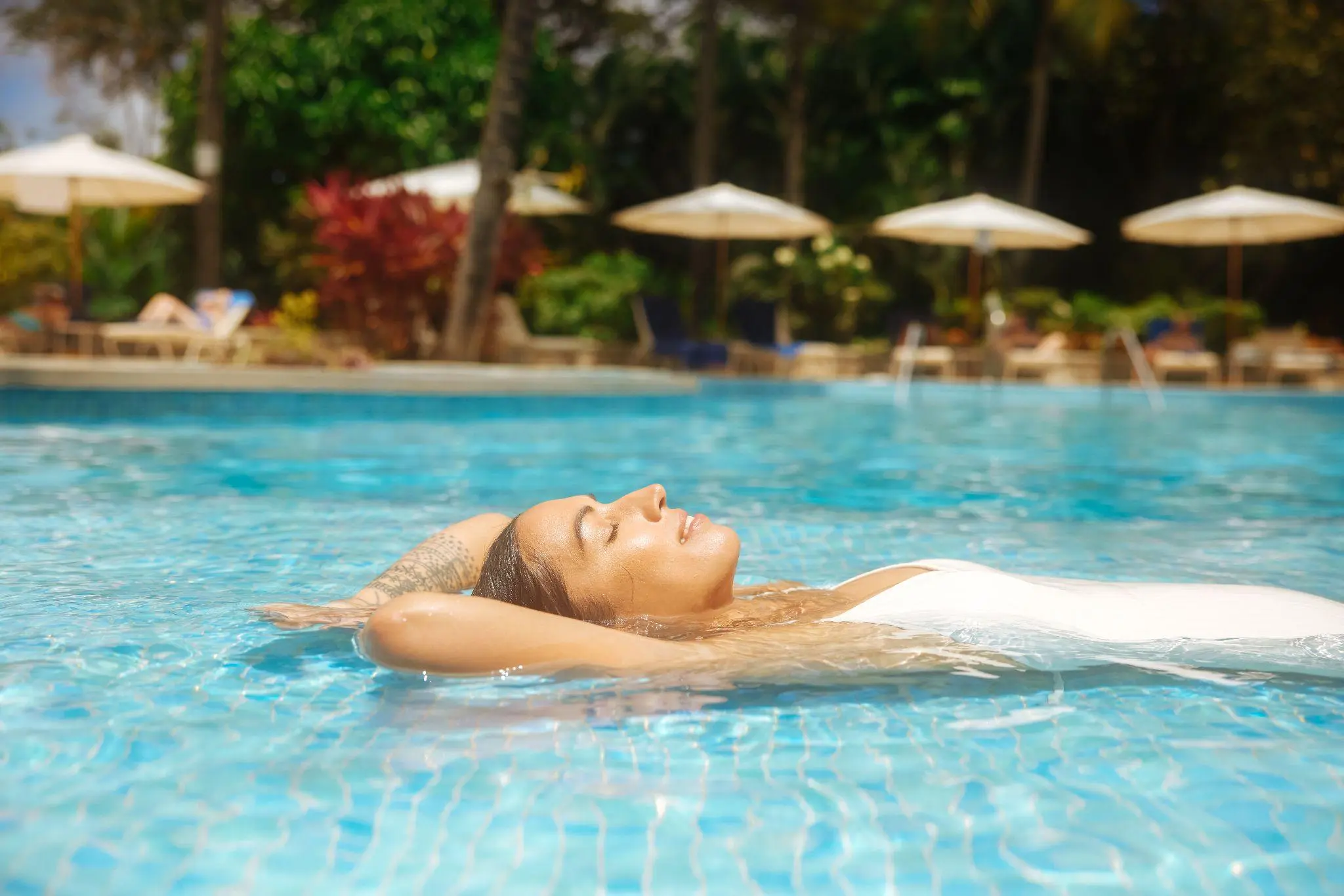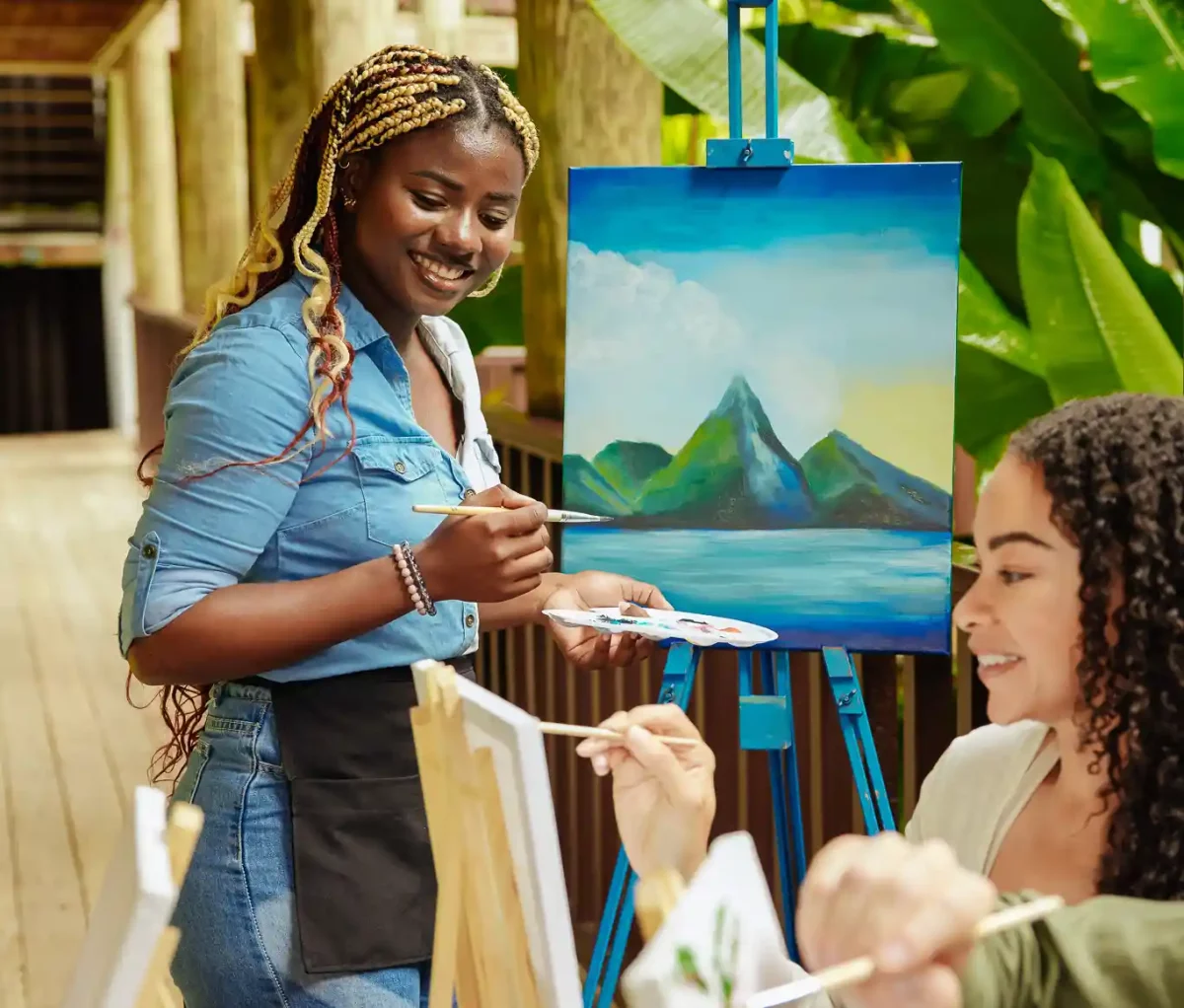As we practice yoga, not only do we celebrate the ancient practice of combining movement, breath, and thoughts, we also celebrate the integration of strength, flexibility, clarity, and balance. At StolenTime, we embrace and celebrate the practice of slowing down and nourishing the body, mind, and spirit.
Our new yoga space. Positively impacts the Stolen Time mission: to create authentic, meaningful, and restorative experiences. What better way to practice yoga than to do it outdoors, under the sun, and with the magnificent Caribbean Sea as your backdrop! Let nature embrace your movement and your breath.
In this blog, we describe the benefits of yoga and the outdoors and how StolenTime’s Beach Front Yoga Deck is the best place to celebrate the beach and rejuvenate
Presence in Practice: The Heart of Yoga
Understanding the essence of yoga helps us to view life with kindness, awareness, and to practice mindfulness. Yoga includes not only physical asanas (postures), but also pranayama (breath work), dhyana (meditation), ethical principles, concentration and stillness.
Whilst yoga has evolved in so many styles, including Hatha, Vinyasa, Yin, Kundalini, and Restorative. The focus remains the same as in ancient philosophy: achieving the desired balance and equilibrium of an individual on a physical, mental, and spiritual level.
Yoga provides tools to help us ”come home” to ourselves. In contrast to the modern busy world, yoga helps us to pause, listen, breathe, stretch and remember what is truly important, and for that reason it has become a refuge.
Benefits of Yoga: More Than Just Flexibilitya
Many people come to yoga seeking physical changes. However, they often leave with unexpected mental, emotional, and spiritual changes instead.
Mobility and Physical Strength
Yoga also helps in functional and long-term strengthening of the muscles. Unlike high-impact exercises that work against the body, yoga changes the body in a more harmonious and sustainable manner. Each posture helps to build stability, enrich healthy posture, increase movement within the joints, and lengthen muscles.
After continuously practicing yoga, individuals have the following:
- ● Less discomfort in the back and joints
- ● Greater range of motion
- ● Better balance and coordination
Less stress and positive Change in mood
In yoga as well as in breath work, the parasympathetic nervous system, the endocrine system that controls the stress, mood, and tension, is activated, Therefore, yoga is also helpful in having positive and helpful overview and anxious thinking.
In addition to the breath work and physical movement, the following will also improve:
- ● Sleep
- ● Positivity
- ● Ability to control and not react to things
- ● Mental clarity
Holistic Wellness and Inner Connection
Beyond its physical and mental perks, yoga helps us reconnect with our inner wisdom, which typically is drowned out by the pressure of the to-do list.
Through the teachings of yoga. Focused awareness and the practices to \ mindfulness, yoga encourages:
- ● Self reflection
- ● Empathetic to the needs of others
- ● Able to make grounded decisions
- ● Comfort, harmony and Inner Peace
This complete nourishment is one of the reasons why people are always returning to yoga.
Why yoga by the sea is special
When yoga is practiced in a nice studio, it is powerful – but near the Caribbean Sea awakens the senses in a way no studio ever could
- ● The rhythm of waves naturally deepens breath.
- ● To the endless horizon, your point of view and perspective will be broadened.
- ● The salty breeze energizes and purifies
- ● The soundscape of nature becomes a living meditation.
Doing exercises outside helps you build a relationship with nature. The feeling of standing barefoot on sand, soaking up the sun, breathing in the sea, feeling the warmth of the sun – help unwind the mind, keep you aware and focused in the moment.
For many, beachside yoga becomes not just a practice, but a profound emotional experience-one that lingers long after the session end.
The Beachfront Yoga Deck at StolenTime
The newest addition to StolenTime, is this one-of-a-kind oceanfront yoga deck that sits right on Malabar Beach. This deck, surrounded by nature, will help promote the balance and the beauty of the ocean with it. With a tropical feel, and the beach at your feet, this deck offers breathtaking views of the island’s tropical sunrise and sunset.
This space offers:
- ● Plenty of space to practice individual and guided yoga sessions, along with group classes
- ● The opportunity to enjoy the outdoors with fresh air and sunlight
- ● The opportunity to practice meditation with no distractions
- ● The opportunity to practice meditation while listening to the calming sound of the ocean
This space is designed for guests to practice to their fullest potential and fully immerse in the moment.
The deck embodies the essence of StolenTime: quiet luxury, soulful connection, and the freedom to slow down and savor life’s most meaningful experiences.
Thoughtful and Meaningful Yoga Experiences
On this deck, classes will be offered to promote all aspects of your health and wellness. Whether your goals focus on emotional balance, relaxation, or physical strength, we have the classes that are right for you!
Sunrise FlowStart the day with gentle movement synchronised with the rising sun. This energising flow awakens the body, clears the mind, and nourishes intention for the hours ahead.
Restorative Sunset Yoga This class is great for beginners, and those looking for deep relaxation before dinner. After a long day, allow the calming postures to slowly sink the body into the ground and release all the tension we carry.
Mindfulness & Breathwork These sessions focus on breathing techniques to reduce stress, and have a calming sea backdrop to center the focus and relax the mind.
Meditative Stretch & Mobility Ideal for travellers, hikers, and runners, this gentle routine incorporates movement to balance the joints and muscle.
At StolenTime, we have trained instructors who focus on alignment, pacing, and providing different options for all different experience levels.
Completing Your Retreat with Mindfulness
To amplify the benefits of the yoga sessions, consider completing your stay with other mindfulness activities.
Morning Journaling by the Sea After a sunrise class, sit with a cup of tea and reflect on your intentions. Journaling helps crystallize insights sparked by your practice.
Gentle Walks On The Beach While you tour the beach, let your breath align with your steps.
Meditation that involves walking, helps secure awareness and relax the brain.
Holistic Spa and Therapy We encourage you to supplement your yoga practice with bodywork, resting rituals, and energy therapies from our Spa in the Water Garden that ease the body and calm the mind.
Nutritious Food Celebrate with meals that are uplifting, balanced, and prepared with fresh ingredients. Mindfully savouring your food is a beautiful extension of your yoga practice.
These complementary experiences support whole-person wellness, allowing the physical and inward benefits of yoga to ripple through your entire day.
A Sanctuary for Slowing Down
StolenTime is a place that offers stillness amidst the distractions of the world – filled with deadlines and digital noise of everyday life.
Each time you step onto the beachfront yoga deck, you step into a moment designed just for you – a moment to breathe, soften, expand, and remember what it feels like to be present.
Restoration and well-being is not always about doing more. Often, it is simply about allowing yourself to stop.
The most fulfilling life experiences are often the simplest, and doing yoga on Malabar Beach is a good reminder: Mindful movement, deep breath, warm sunlight, and the gentle rhythm of the sea.
Your Yoga Journey Awaits
The new beachfront yoga deck at StolenTime is more than a beautiful structure-it is an invitation. It is a call to pause, look within, embrace peace, and create a space for what truly matters. Whether you join us for sunrise flow, restorative sunset yoga, or meditative breathwork, this is a place where transformation unfolds effortlessly.
We look forward to helping you take your first steps toward a stronger connection with your inner man – as you meet the deck and the island.
Take a moment to peacefully arrive and begin your journey by simply breathing in and out.


